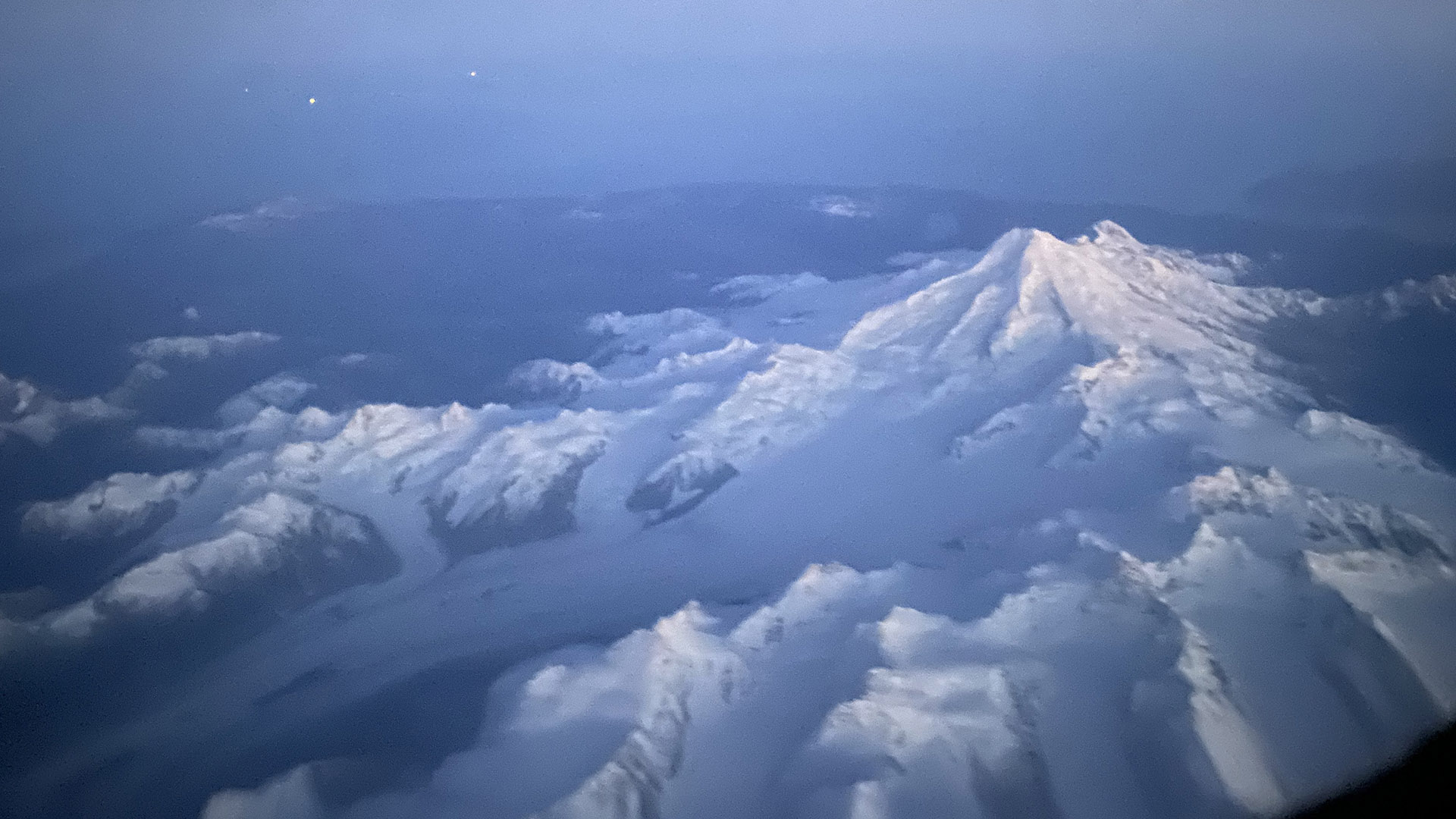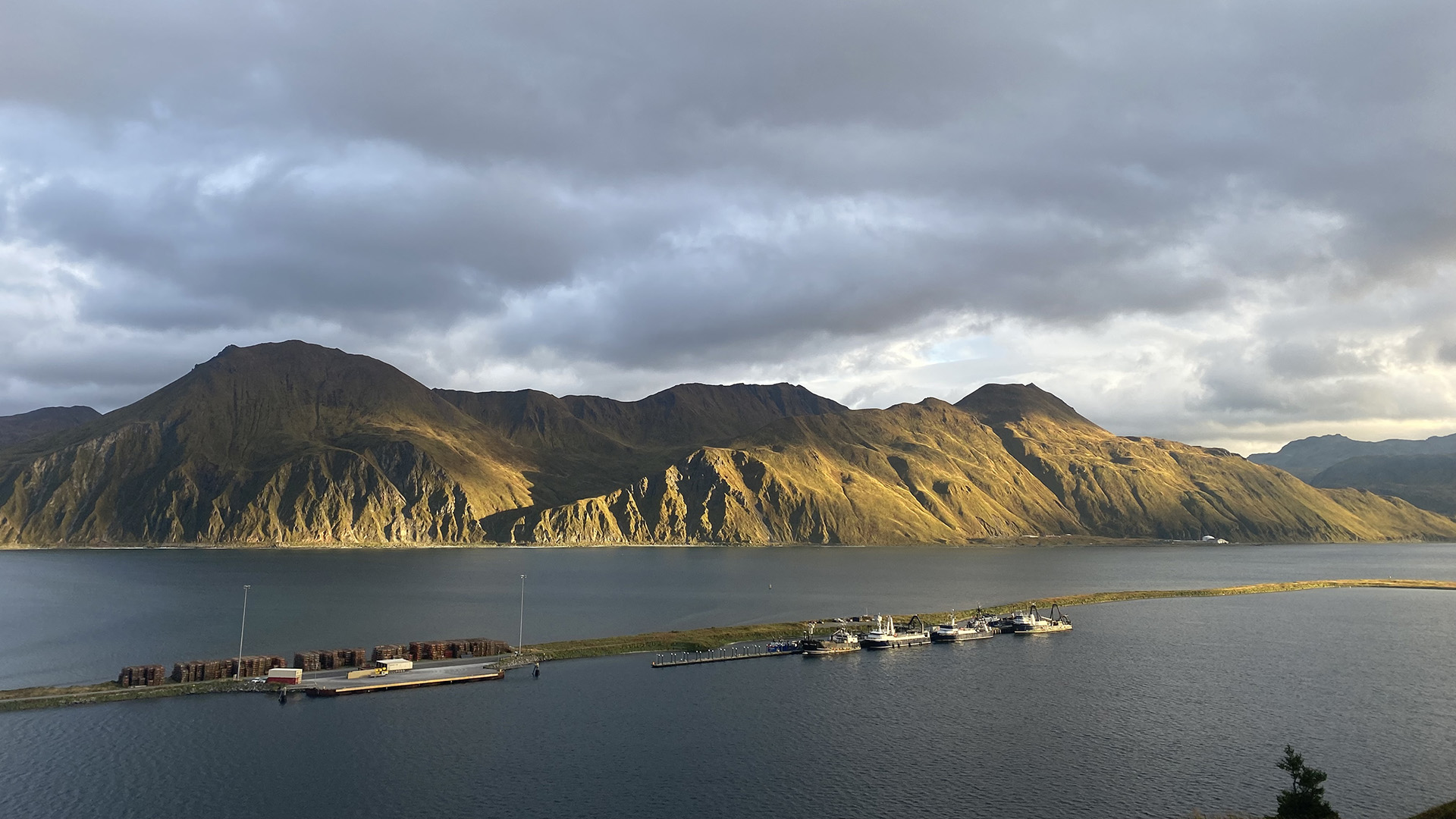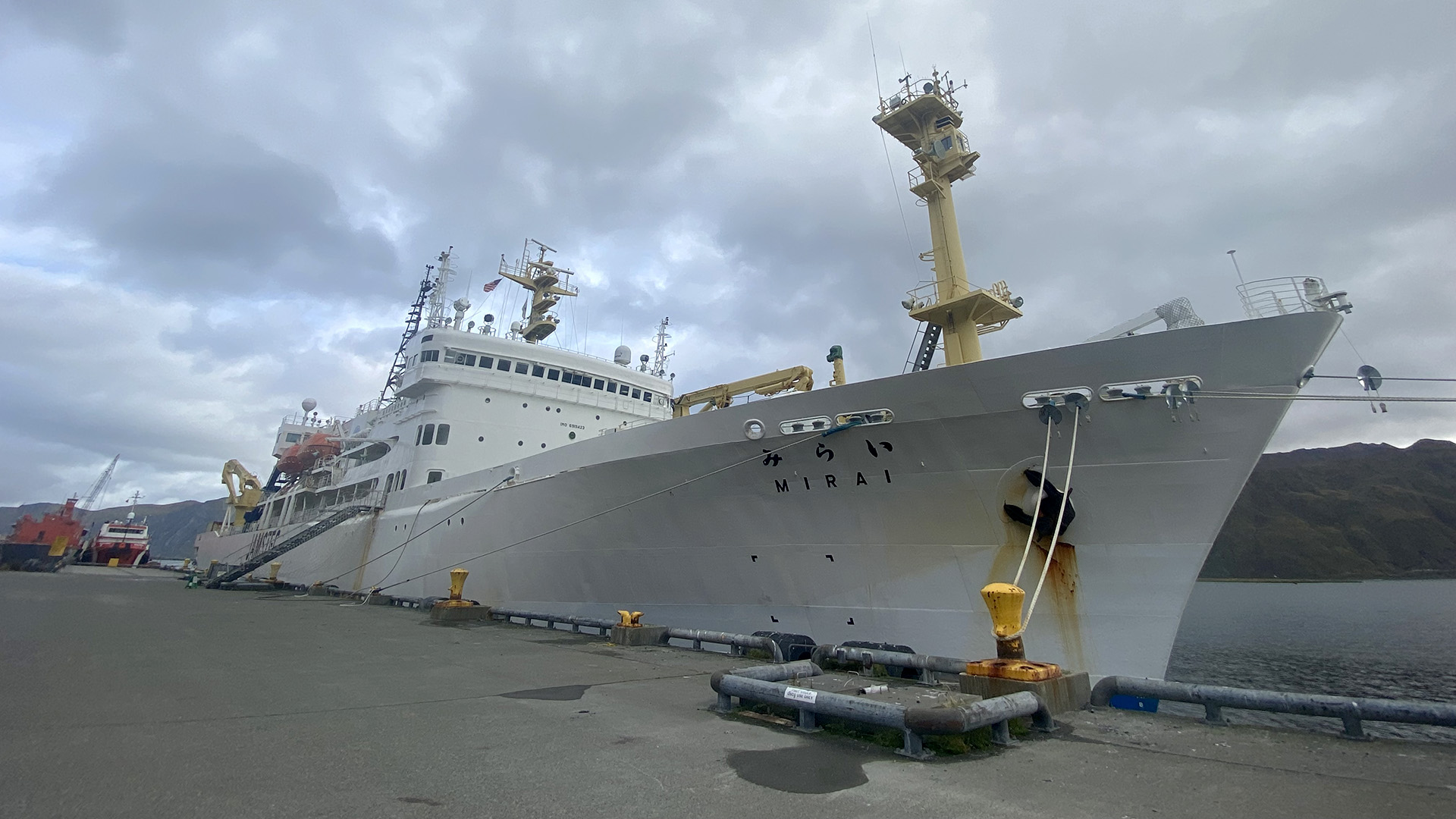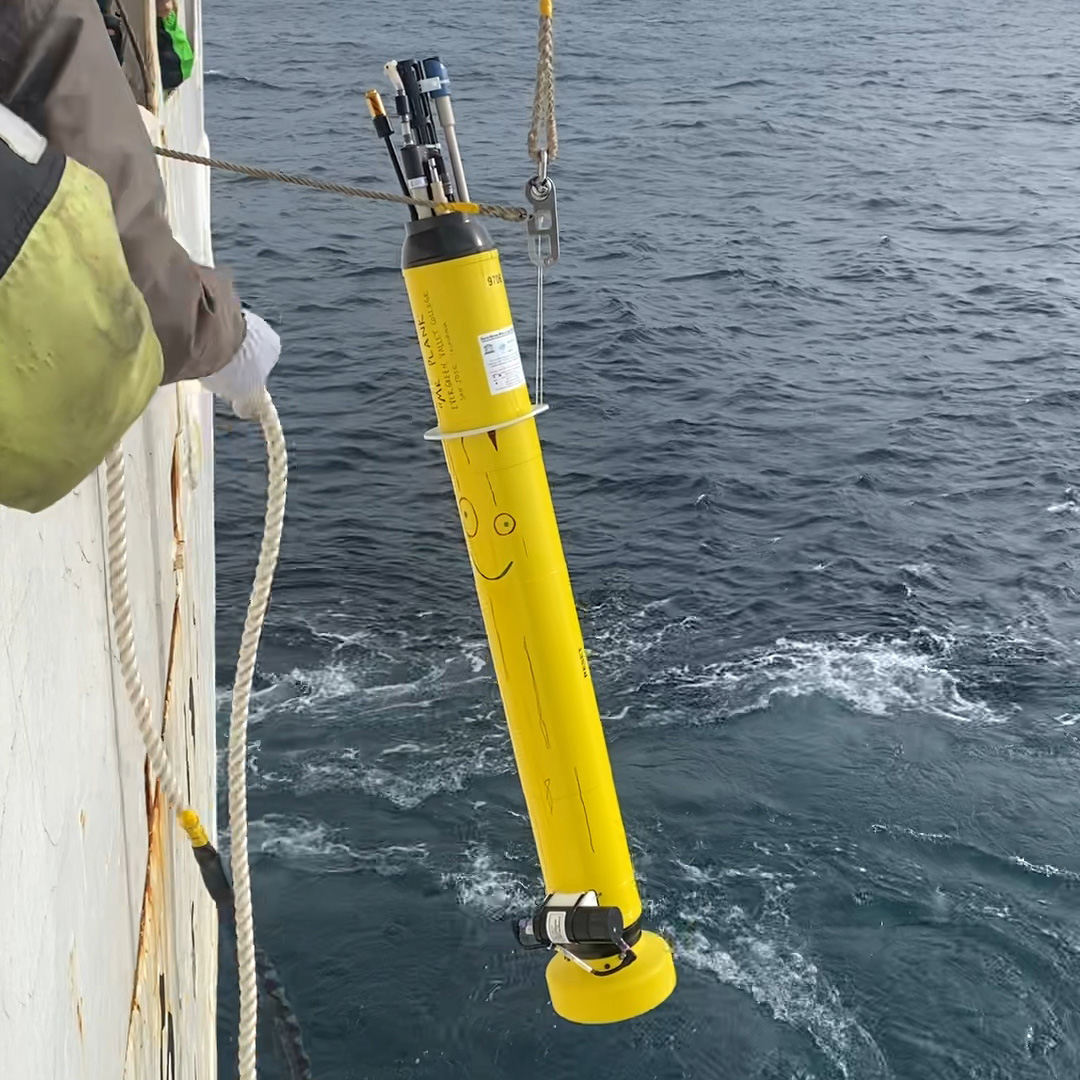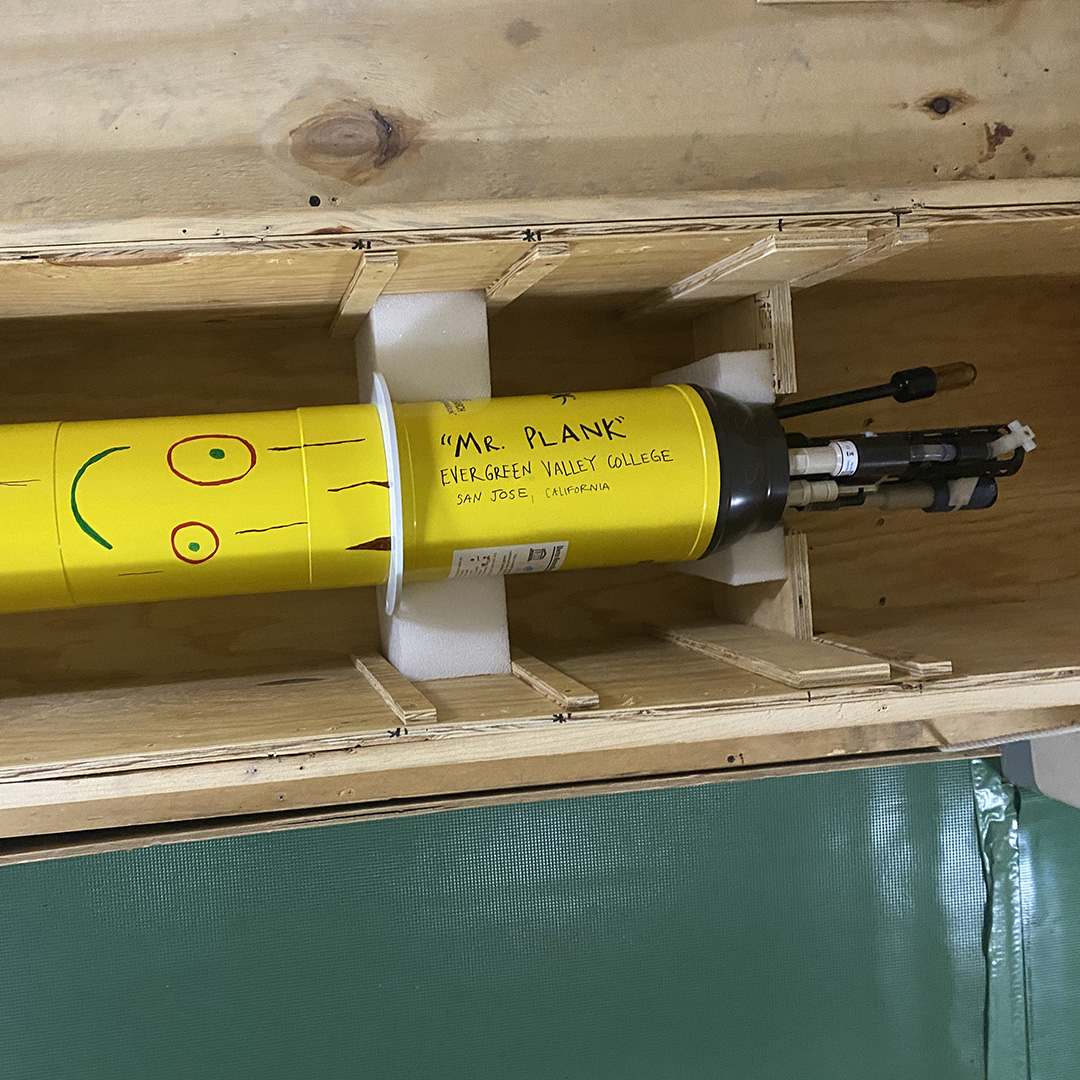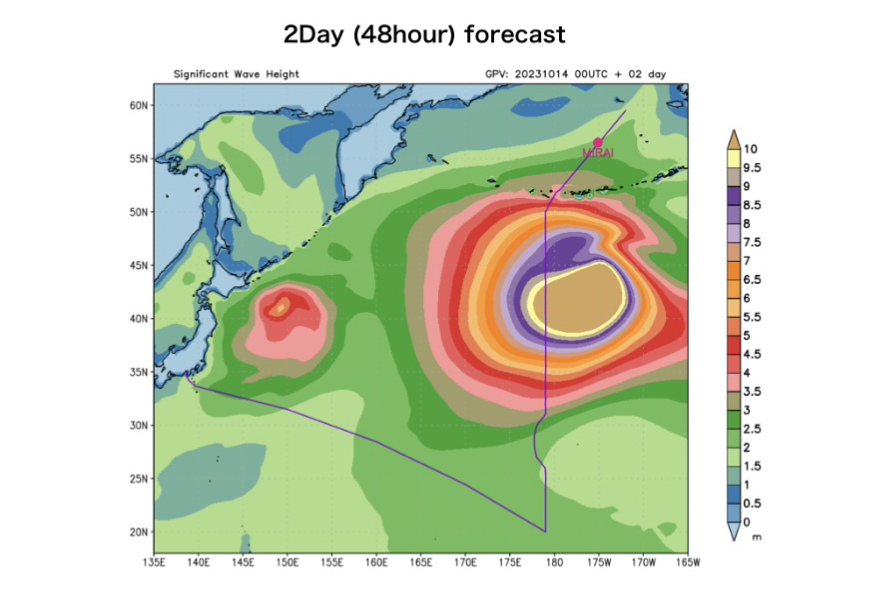GO-SHIP P14N: Hello from the Bering Sea!
P14N Log: The First 10 Days
Hello from the Bering Sea! The Japanese oceanographic research vessel Mirai is 10 days into the GO-SHIP repeat hydrography line P14N, which spans from the Bering Sea to near Hawaii. We departed from Dutch Harbor, Alaska, a small port and fishing town in the volcanic Aleutian Islands chain. Just getting there was an adventure: nearly three hours into our four-hour flight to Dutch Harbor from Anchorage, our plane turned back due to volcanic ash from a nearby eruption. A dozen others on that flight were also bound for the Mirai. We got a few hours of sleep that night in Anchorage and luckily caught another flight early the next morning. Alaska’s incredible beauty comes with plenty of natural hazards.
From Dutch Harbor, we made our way north in the Bering Sea. So far, we have deployed one GO-BGC float. Mr. Plank is the first biogeochemical float in the Bering Sea! The float was adopted by Evergreen Valley College in San Jose, California. I didn’t get the reference to the TV show Ed, Edd and Eddy, and had to look it up. It does make a nice use of the canvas.
Initially I wondered if perhaps Mr. Plank might float into the Arctic Ocean, thinking of the Pacific waters that flow north through Bering Strait. However, since the float was deployed in the deep basin of the sea, it is expected to stay within the gyre circulation there and is unlikely to be entrained onto the continental shelf and into the currents there that flow north. That also answered my second question about whether Mr. Plank would spend time under sea ice – Mr. Plank might encounter sea ice that is blown from farther north, but sea ice is not likely to form over the deeper and further south basin waters.
After a few busy days of sampling, the team’s productivity was interrupted by two big storms arcing across the North Pacific. The second of the two looked especially impressive, with the center of the storm predicted to produce waves exceeding the chart’s color scale for wave height at 10 meters! I decided to look it up, and I found that it is called Typhoon Bolaven, and it is the second strongest storm of 2023. The first of the two storms made its way north into the Bering Sea, and we experienced waves up to 8 meters (26 feet!). The Mirai is the largest ship I have been on at 360 feet long, and I am impressed by how comfortable it has been in these conditions.
So far, we’ve lost four days of sampling due to weather. It’s too bad that these delays mean we won’t finish all the planned sampling stations, and some of the planned float deployment locations have been shifted. But this is the nature of going to sea, especially in October in the North Pacific.
It has been a pleasant and interesting time on board. I’ve never sailed on a foreign ship before and have generally spent little time in settings where English is not the primary language. All the scientists and crew on board have been very kind, patient and welcoming. I hope that I am leaving a similarly good impression and am not inadvertently being disrespectful with my American habits. I feel very lucky to be getting not only great scientific experience, but a unique cultural experience as well.
~Addie Norgaard

